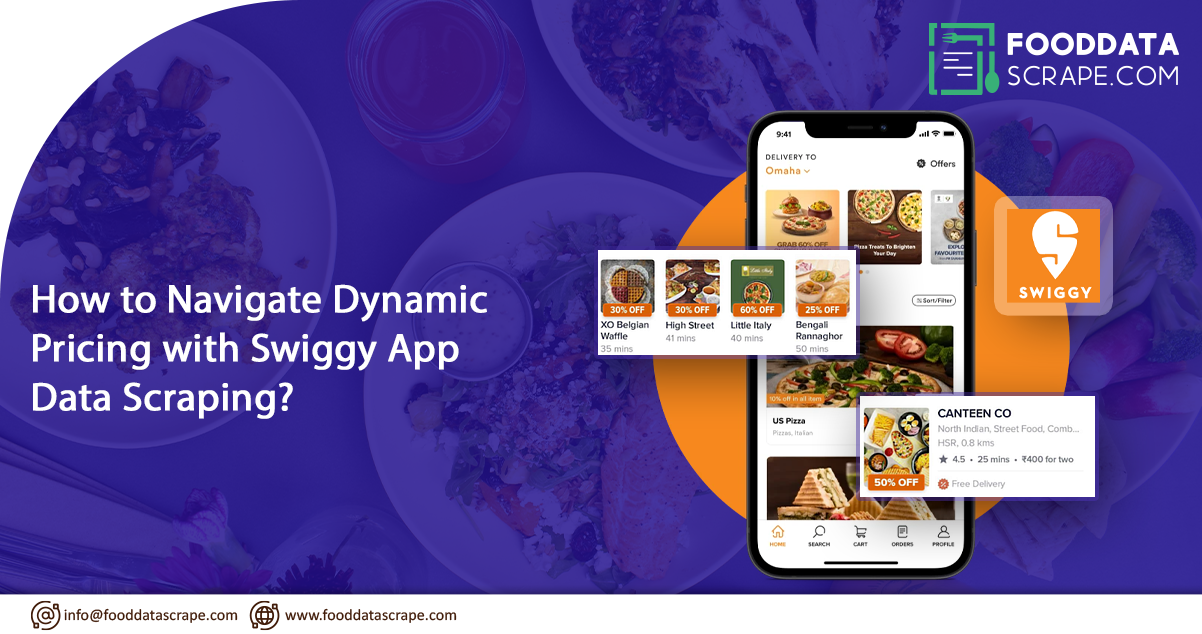Introduction: Food delivery app data scraping involves extracting valuable information from various platforms using automated tools or scripts. These tools navigate the app's interface, collecting data such as restaurant details, menu items, prices, customer reviews, and delivery times. This process helps businesses and developers gather insights into market trends, competitor strategies, and customer preferences, enabling them to make informed decisions.
Food delivery app data scraping is instrumental in creating comprehensive databases for analysis, streamlining market research, and enhancing the user experience. It allows businesses to stay competitive by staying informed about the ever-changing dynamics of the food delivery industry. However, it's essential to adhere to ethical standards, respect the terms of service of the respective apps, and ensure user privacy. As the food delivery sector evolves, scraping food delivery data becomes a powerful tool for those seeking a competitive edge and a deeper understanding of the market landscape.
List of Data Fields
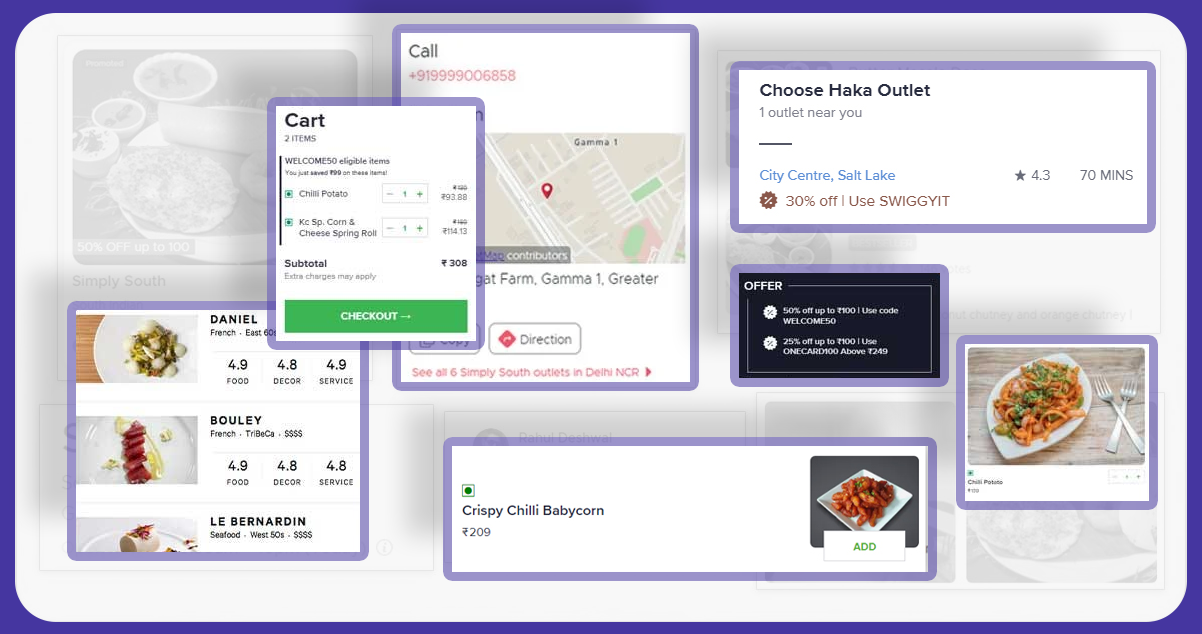
- Restaurant Address
- Restaurant Contact Number
- Restaurant Opening Hours
- Restaurant Cuisines
- Restaurant More Info
- Restaurant Reviews
- Restaurant Payment Method
- Restaurant Longitude & Latitude
- What People Love at Restaurant
- Menu Items
- Menu Type
- Item Price
- Item Discount Price
- Menu Description
About Swiggy Food Delivery App
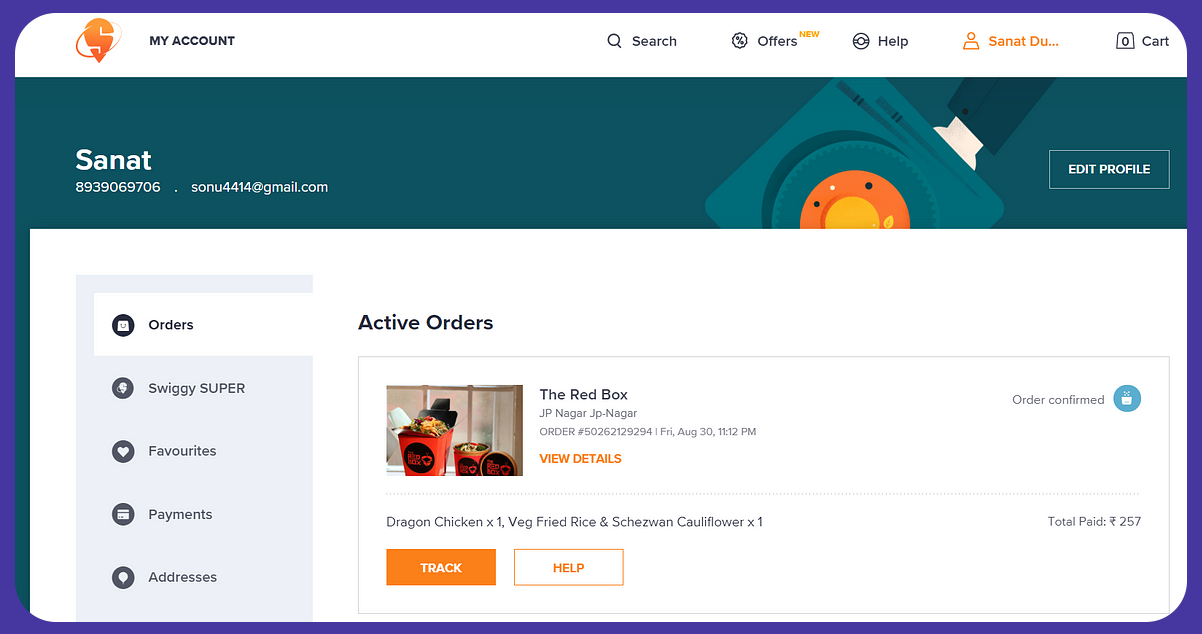
Swiggy is a prominent food delivery platform and online food ordering service based in India. Launched in 2014, Swiggy has become one of the leading players in the Indian food delivery industry. The platform connects users with local restaurants, allowing them to order a variety of cuisines for home delivery.
Several key features of the Swiggy food delivery app include:
- A user-friendly interface.
- A vast selection of restaurants and menu items.
- Real-time order tracking.
- Multiple payment options
Swiggy's delivery fleet, comprising executives known as "Swiggy Genie," ensures quick and reliable food deliveries.
Swiggy has expanded its services beyond food delivery, offering options like grocery delivery, alcohol delivery (in select locations), and Swiggy POP, which provides curated meals at affordable prices. The platform often introduces discounts, promotions, and loyalty programs to enhance user experience. Scrape Swiggy App data to help analyze user preferences, trends, and behaviors, enabling businesses to enhance their services, optimize menus, and create personalized customer experiences.
Importance of Swiggy Food Delivery App Data Scraping
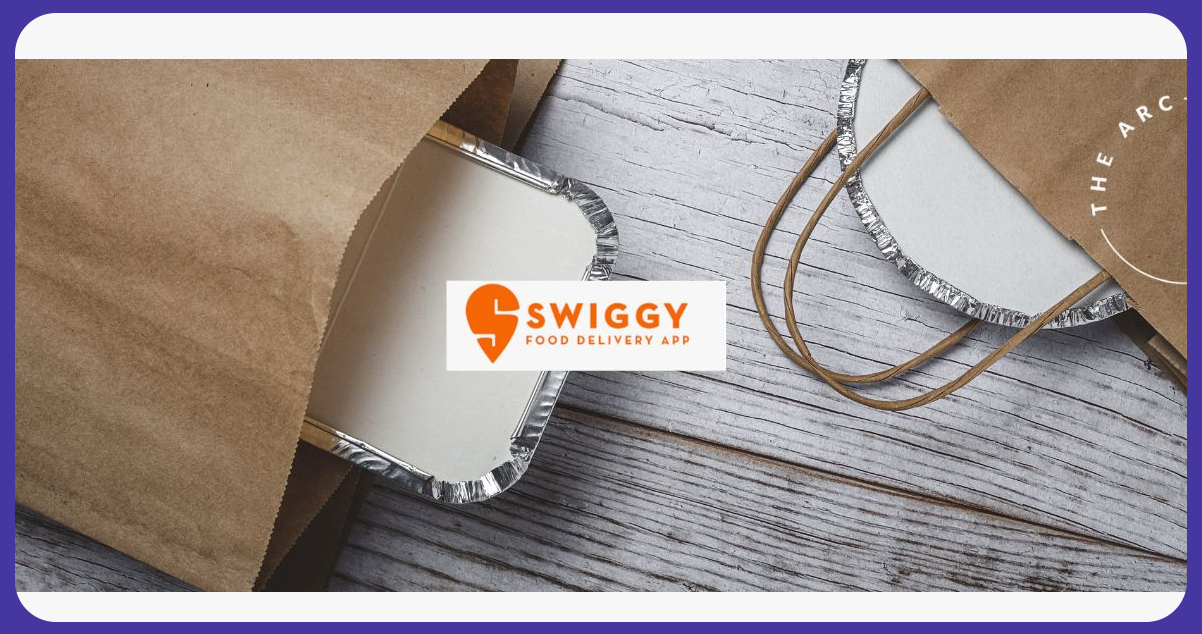
The importance of Swiggy food delivery app data scraping for business lies in the valuable insights it can provide, empowering companies to make informed decisions and optimize their operations. Here are several vital reasons why Swiggy data scraping can be crucial for businesses:
User Behavior Analysis:
- Swiggy app data scraping understands customer preferences, ordering patterns, and popular food choices.
- Identify peak ordering times and trends to tailor promotions and marketing strategies accordingly.
Competitor Analysis:
- Analyze the performance of your offerings compared to competitors on the platform using Swiggy Food Delivery Scraping API Services.
- Stay informed about pricing strategies, menu innovations, and promotional activities of competitors.
Menu Optimization:
- Evaluate the popularity of specific dishes and make informed decisions about menu items.
- Identify underperforming items and introduce new offerings based on customer demand.
Pricing Strategy:
- Monitor price fluctuations using food delivery data scraping services and adjust your pricing strategy to stay competitive.
- Implement dynamic pricing based on demand, time of day, and other relevant factors.
Marketing and Promotions:
- Scrape restaurant data to design targeted marketing campaigns based on customer preferences and behaviors.
- Optimize promotions, discounts, and loyalty programs to attract and retain customers.
Supply Chain Management:
- Streamline inventory management by predicting demand for specific ingredients or dishes.
- Reduce waste and improve efficiency in the supply chain through data-driven insights.
Customer Retention:
- Personalize user experiences by understanding individual preferences.
- Implement loyalty programs and incentives based on customer behavior to enhance retention.
Adapting to Trends:
- Stay ahead of industry trends by analyzing data on emerging cuisines and food preferences.
- Quickly adapt to changing consumer demands and preferences.
Decision Making:
- Restaurant data scraper provides a solid strategic decision-making foundation by leveraging accurate and up-to-date data.
- Enable data-driven decision-making across various departments within the business.
Enhancing User Experience:
- Use insights to improve the overall user experience of the app.
- Implement features and functionalities that align with user preferences and expectations.
Primary Use Cases of Swiggy App Data Scraping
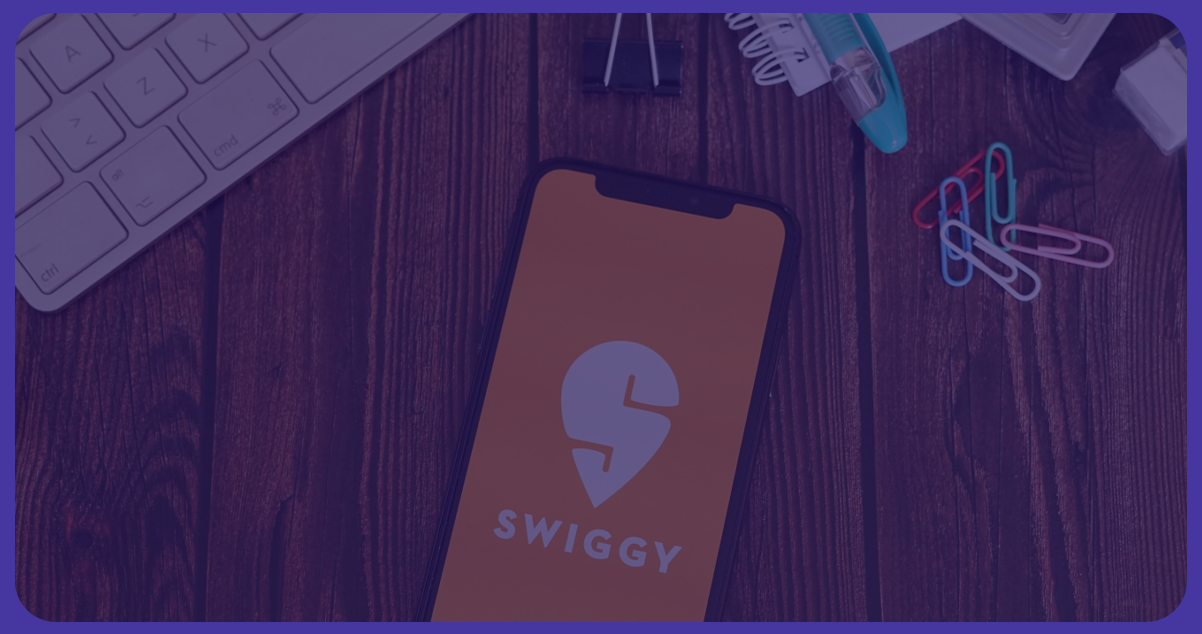
Competitor Analysis and Market Research:
- Data Extraction: Utilize web scraping tools to extract Swiggy data on competitor performance, menu offerings, pricing strategies, and customer reviews from the Swiggy platform.
- Analysis: Evaluate the data to identify market trends, popular cuisines, and customer preferences. Compare your business's performance against competitors to pinpoint strengths and areas for improvement.
Menu Optimization:
- Data Collection: Scrape data on dish popularity, customer ratings, and reviews to understand which items are performing well and which ones may need improvement or removal.
- Optimization: Use the insights gained to optimize your menu by introducing new items that align with customer preferences and removing or reimagining underperforming dishes.
Dynamic Pricing Strategy:
- Data Scraping: Continuously monitor pricing data on the Swiggy platform, including your competitors' prices and fluctuations in demand for specific dishes during different times of the day.
- Implementation: Adjust your pricing dynamically based on the gathered insights. Implement targeted discounts or promotions during peak hours or low-demand periods to attract more customers.
Personalized Marketing Campaigns:
- Data Analysis: Analyze customer data, including order history, preferences, and behaviors, obtained through scraping.
- Segmentation: It segments customers based on their preferences and ordering patterns. Design personalized marketing campaigns, loyalty programs, and promotions to engage specific customer groups effectively.
Operational Efficiency and Supply Chain Management:
- Demand Prediction: Leverage scraped data to predict demand for specific dishes or ingredients.
- Supply Chain Optimization: Optimize inventory management and supply chain processes based on accurate demand forecasts. Minimize food wastage and enhance operational efficiency.
Customer Experience Enhancement:
- Feedback Analysis: Scrape customer feedback and reviews to identify pain points and areas of improvement in the user experience.
- Continuous Improvement: Implement changes to enhance the app experience, addressing issues highlighted by user feedback. Monitor the impact of these changes on user satisfaction and retention.
Remember to follow ethical guidelines and legal regulations when scraping data from any platform. Additionally, ensure that your data usage aligns with Swiggy's terms of service. Regularly update your scraping techniques to adapt to platform structure or policy changes. Integrating these insights into your business strategy can improve decision-making, customer satisfaction, and overall business performance.
Difference between Swiggy Web Scraping and Swiggy App Scraping
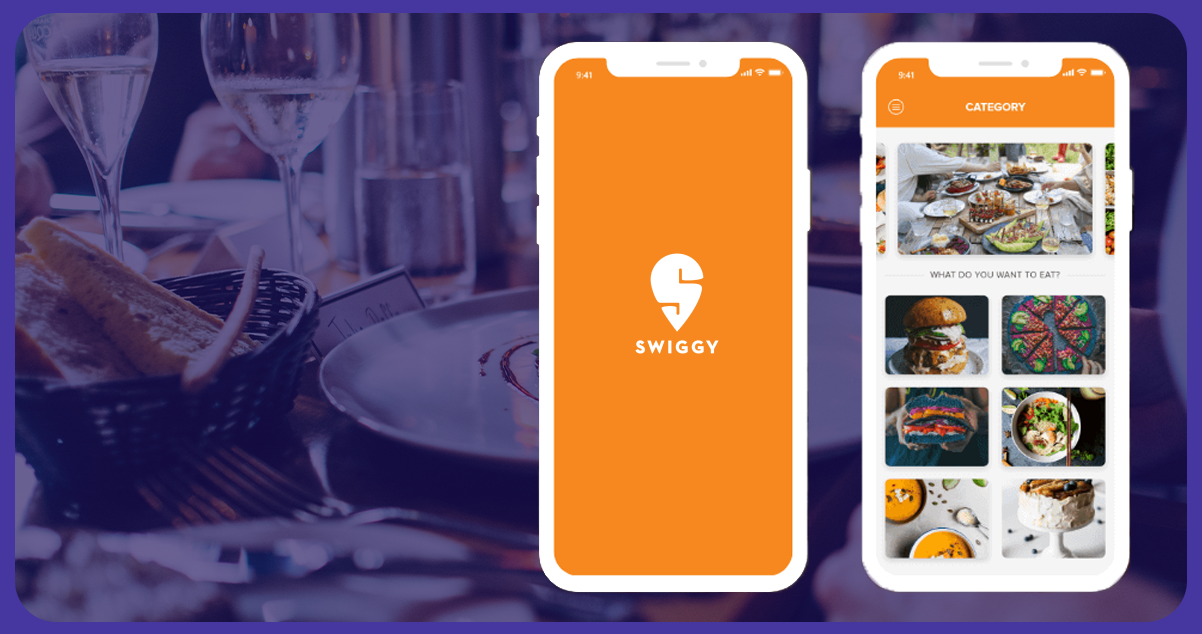
Source of Data:
Swiggy Website Scraping: This involves extracting data directly from Swiggy's official website. It can include restaurant details, menu items, pricing, and user reviews.
Swiggy App Scraping: Refers to extracting data directly from the Swiggy mobile application. It may include user interactions, preferences, order history, and other app-specific data.
Data Structure:
Swiggy Website Scraping: Typically involves parsing HTML, CSS, or JavaScript code from the website's source code. Structure the data in a way that optimizes for web display.
Swiggy App Scraping: Requires dealing with data formats specific to mobile app development. It might involve accessing data through the app's APIs (Application Programming Interfaces) or reverse-engineering data storage.
Ease of Access:
Swiggy Website Scraping: It is generally more accessible and straightforward, as the data is publicly available online. However, websites may have anti-scraping measures in place.
Swiggy App Scraping: This can be more challenging, as it often involves reverse engineering the app's communication with servers or extracting data from its local storage. It may also involve dealing with encryption and security mechanisms.
Data Granularity:
Swiggy Website Scraping: Provides information available on the public-facing website, which may include details about restaurants, menus, and reviews.
Swiggy App Scraping: Can access more granular and personalized data, such as user-specific information, order history, and real-time interactions.
Legal and Ethical Considerations:
Swiggy Website Scraping: While it might be subject to the website's terms of service, it is more acceptable and legal if done in compliance with the site's policies.
Swiggy App Scraping: This involves interacting with a platform's proprietary application, and scraping app data may violate the terms of service. Additionally, bypassing security measures or reverse-engineering the app might be legally and ethically questionable.
Updates and Maintenance:
Swiggy Website Scraping: Changes to the website's structure may require periodic adjustments to the scraping script, but it's generally easier to adapt.
Swiggy App Scraping: Any updates to the app, including changes in data storage or communication protocols, may necessitate frequent adjustments to the scraping method.
Conclusion: Swiggy app data scraping emerges as a strategic ally for businesses operating in the food delivery industry. By harnessing the power of scraped data, businesses can unlock a treasure trove of insights, ranging from market trends and competitor benchmarks to personalized customer preferences. This valuable information becomes a compass for optimizing menus, implementing dynamic pricing strategies, and enhancing overall operational efficiency. Swiggy app data scraping, when performed ethically and in compliance with regulations, becomes a cornerstone for informed decision-making and innovation and ensures a seamless, customer-centric experience in the competitive landscape of food delivery services.
For profound insights, connect with Food Data Scrape. We specialize in Food Data Aggregator and Mobile Restaurant App Scraping, offering comprehensive data analytics and insights to enrich your decision-making and elevate your business strategies. Reach out today to unlock a pathway to success guided by data-driven intelligence.






















































































